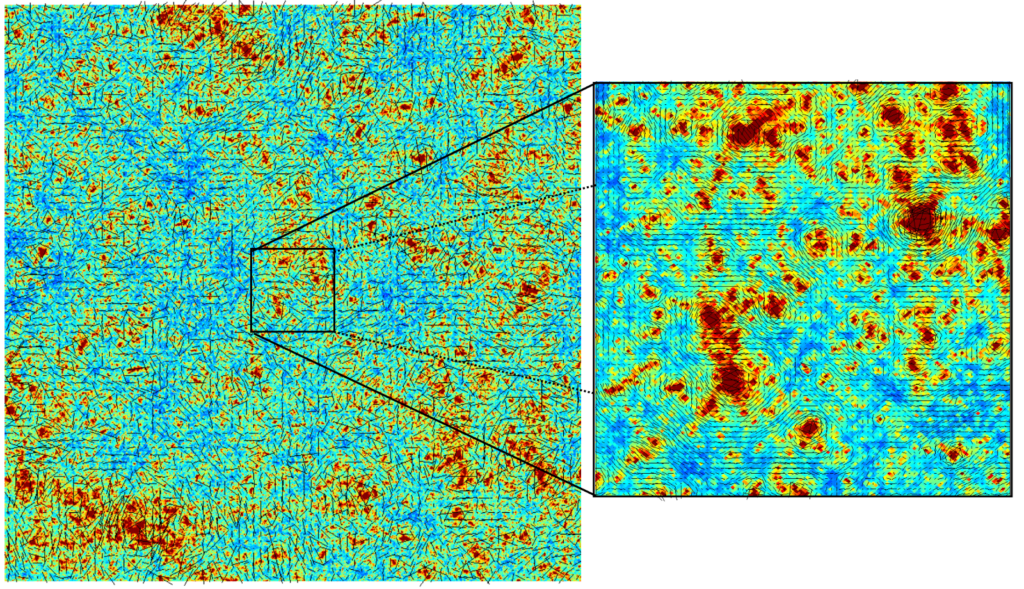In our final post on the Euclid Consortium’s new set of reference papers we are turning to an essential part, the final ingredient to enable Euclid’s cosmology goal: Paper 5 (Euclid. V. The Flagship galaxy mock catalogue: a comprehensive simulation for the Euclid mission, Euclid Collaboration: Castander et al. 2024) is about the newly completed cosmological simulation, the Euclid Flagship Simulation, providing a fully-controlled input for testing and characterising the Euclid science pipeline.
Find parts 1 and 2 of this paper series here: the Euclid Mission Overview and the Euclid Instruments
In this paper the EC describes these new Flagship 2 simulations. They create “mock” galaxies inside dark matter haloes over one octant of the sky, and ranging from 10 billion years in the past to the present. This required the physics-based calculation of detailed properties for a total of 3.4 billion galaxies. These properties include stellar masses, star formation rates, luminosities and apparent colours, shapes and sizes, but also the abundance of heavy elements, brightness of spectral emission line, and properties related to gravitational lensing – a total of 399 properties for every galaxy.

Weak gravitational lensing properties of a small subset of the Flagship 2 simulated dataset. Shown are 50 quare degrees of the sky, the total simulated area is 100x larger. Colours mark how large a galaxy would be magnified in size and brighness from its light moving past massive structures in the foreground. The field of small bars indicated the direction and strength of images being stretched by the same effect.
(Adapted from Euclid Collaboration: Castander et al. 2024)
The Flagship 2 simulations will allow the Euclid Consortium to run these input galaxy catalogs through their instrument simulation pipeline to create actual pixel image data, that can be analysed as if it were “observed” data of the sky. This allows the EC to derive cosmological parameters as will be done with the data from Euclid’s wide survey, but with the exact knowledge of the cosmological parameters that were inserted at the top. A comparison will directly tell whether there are biases in Euclid’s cosmology data analysis, and the pipeline can be adjusted accordingly. At the same time, these simulations have been released to the world and will function for many other astrophysical applications beyond the Euclid context.
These simulations were technically very challenging. First, a cosmological simulation of dark-matter halos was carried out, starting in the earliest Universe at “redshift 99”, which corresponds to a time of less than 20 million years after the big bang. A total of 31 trillion dark matter masses was then traced across cosmic time to the present, only using gravity as a mechanism to modify their position and velocities, plus a small correction for all other forces acting at the time. These mass “particles” were then converted into 125 billion dark matter haloes – the gravitational structures in which all visible galaxies including our Milky Way reside.
The second and even more complex step was to then populate these haloes with galaxy properties, calculating masses of gas and stars and many other characteristics, guided by physics and matched to observed properties of galaxies in the Universe. These “painted-on” galaxies in the end have very complex properties that can be used to test and evaluate galaxy evolution models, analysing them in the same way as observed galaxy catalogs. For Euclid, specifically the weak lensing and galaxy clustering properties are centrally important – to be evaluated by Euclid’s data analysis pipeline. In the end, Euclid’s will need to not only provide values characterising dark energy, but – centrally – also the uncertainties associated with them. The Flagship 2 simulations are one building block at the core of Euclid’s mission design – and another successful aside from now having a functional satellite in space.
More background on how the simulations are being used, and how they were created are summarized in this EC video:
Article: Euclid. V. The Flagship galaxy mock catalogue: a comprehensive simulation for the Euclid mission, Euclid Collaboration: F. J. Castander + 367 further authors, submitted to Astronomy & Astrophysics, arXiv:2405.13495


